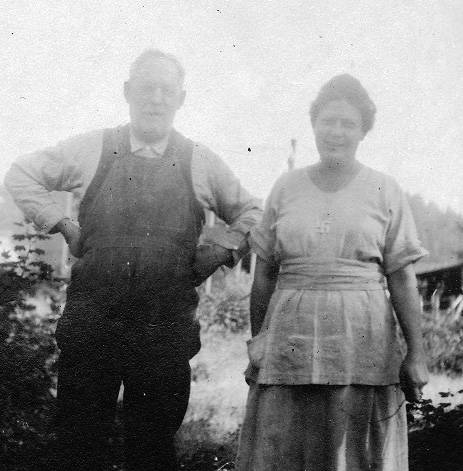By Christi Baron
In Forks’ very early years, around 1911, Adam Copeland surveyed and laid out the streets for the town’s future growth. The street names at that time were named after himself, others living here at the time, and prominent landmarks. Some of those street names still remain but many have been changed or are long forgotten.
In the beginning, Forks was a dead end. The road which is now Highway 101 was called The Lane, and it ended where Forks Outfitters sits today. Calawah Way was called Howard Street named after Marcus Howard, who platted part of the town of Forks. Division Street was named Water Street for the creek which ran through the center of town. Guests at the Forks Hotel, which sat where Chinook Pharmacy is today, were lulled to sleep by the sound of croaking frogs that frequented the creek. The creek also flooded out the downtown on occasion.
There was Orchard Street, where the orchard was … and then there was a road named Murdock Street.
Murdock was a horse packer; he brought supplies to government workers and settlers south of Forks where there was no road. Murdock was a hit with the Copeland children and would entertain them with his stories about his cavalry horses. One horse, in particular, was named Old Blue, which Murdock would ride at top speed, come to an abrupt halt and slide off. The horse would lie like a barricade as Murdock would fire shots at imaginary enemies.
While Murdock Road is long gone other early settler’s names still remain on many local roads. Palmer Road is one of them. Charles Palmer was born in New York in 1875, he came to the Bogachiel area and homesteaded in 1902 and then bought acreage on the Forks Prairie. He was an active member of the community and was an original stockholder in the Forks co-operative creamery.
Merchant Road is named after a person not one’s occupation. Mickey Merchant inherited property and resided in a cabin by the Calawah River at the end of the road which now bears his name.
Some early settlers did get overlooked when it came to street naming among them Whittier and Groffman, and some got misspelled and sometimes the term road was an exaggeration, they were crude muddy and in one case it even had a stream running down the middle of it.
Prior to 1994, the City of Forks and surrounding areas in the West End relied on landmarks and references as to where a certain individual resided when direction were needed for finding a particular location. Although there were street letters and numbers and a few major roads that had identifiable names like Bogachiel, Calawah and Division more often than not directions were usually “you know over by so and so’s house.”
Then the Clallam County Addressing System was designed by a committee of Emergency Service Responders and other service providers in response to critical emergency service needs. The system was designed to identify every address location in the County, provide the simplest, most effective way to locate an address in an emergency, and be convenient and understandable for general use.
When local streets started receiving their new names there were names of trees, flowers, lakes, and streams, also the names of local pioneers.
Just off Calawah Way in Thomas Addition, between a street named for a flower, Trillium, and a street named for a tree, Pine, sit Ackerly, Collins, and Mayberry Streets.
Francis Marion “Frank” Ackerly was born in New York State in 1855. By 1895 Ackerly was residing in Clallam County and had received a patent signed by President Grover Cleveland for his homestead site, where he platted a town, named it Sappho, and sold lots. Around 1905 he opened a general store in Forks, in 1910 he married a schoolteacher named Grace Falconer, they resided in the house that still stands today between the former JT’s Sweet Stuffs and Native to Twilight, formerly Coast to Coast. Ackerly passed away in 1929.
The next street over is Collins, it actually should be Colling or Collings. Henry J. Collings was born in Washington County, Virginia in 1829. He was a civil war veteran and served with Company B 63rd Virginia Infantry C.S.A.The 1910 census shows he and his wife Margaret residing on the South Forks Prairie Road and his occupation was farmer. Collings passed away in 1918 and is buried at the Forks Cemetery.
The next street in Thomas addition is Mayberry. It probably should be Maybury. William Maybury was born in New York in 1850. Census records in 1900 and 1910 show him operating a dairy farm and then a general farm on the Forks Prairie. In 1897 he married widow, Martha Irwin Merchant. Maybury died in 1922.
One block off of Division Street is Elterich Street. David Elterich was also a New Yorker born around 1856. Elterich married Malinda Collings Stephens in 1896. In 1903 Mrs. Elterich helped organize the First Congregational Church and procured the money to build it. She also served on the school board and was active in many other civic activities in Forks.
For a community to know where it is going it should know where it has been, and many of our street names reflect the history of those who have “paved” the way.



